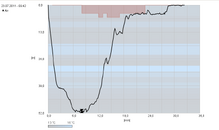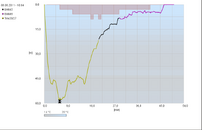Back when I was young and foolish I had to install some transect lines at Pt. Lobos, which was the control site for a study we were doing on Monterey outfall that was about to be installed. I decided to dive doubles, one cylinder for me and one cylinder for my drill. I went to the DSO for permission, and he told me that I could use the doubles, if and only if, I could complete our standard class circuit swim within the required time while wearing them. It took me three tries, but I did. At the time I thought it was just a brutal strength test but by the time I had successfully completed it I had found that there were a lot of finesse solutions as well. It is those finesse solutions that you need to learn, and you'll only get them from an experienced doubles diver, e.g., one who dives doubles most of the time, which few do (I don't). But if you can't find a mentor who does, there are groups like GUE that are composed of doubles divers almost exclusively.






